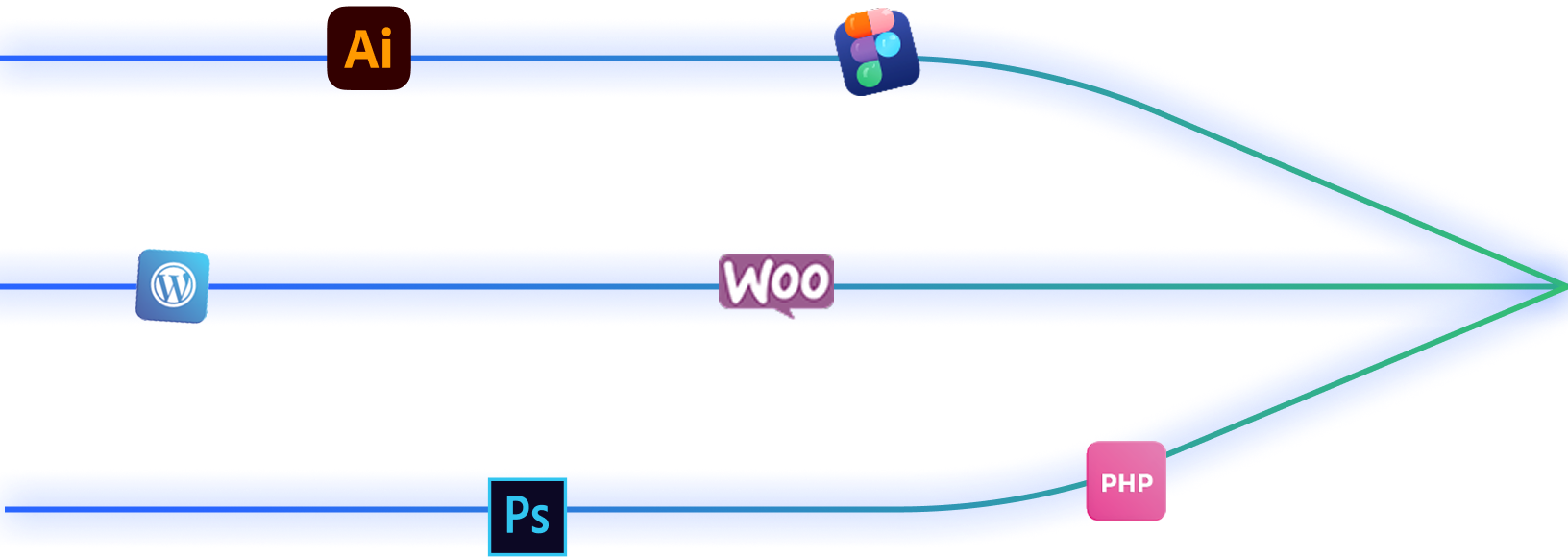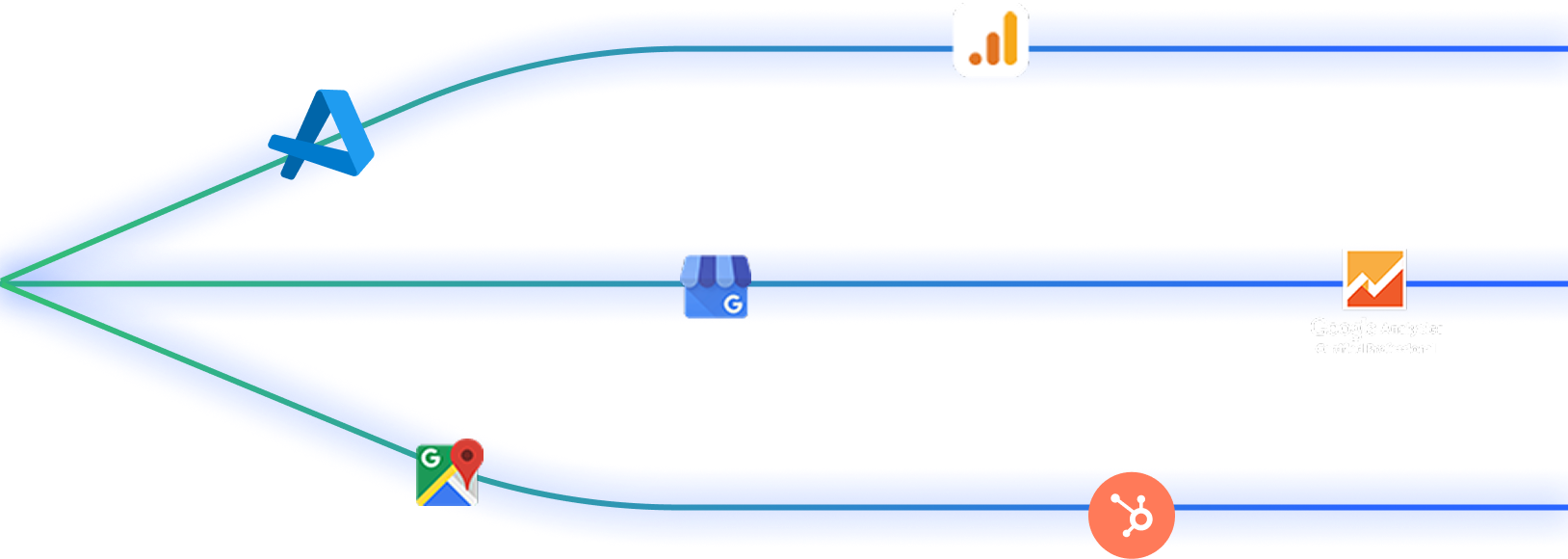Building a Website is Like Building a House: Why Custom Web Development is Essential

Building a website is very much like building a house. When you design and develop a website, you follow a well-defined process, similar to constructing a house. Each part of the process, from conceptualization to execution, is crucial for creating a final product that serves a functional purpose and looks great while doing so. However, just as you wouldn’t settle for a cookie-cutter house, you shouldn’t settle for a generic website template. Custom web development offers the flexibility, security, and tailored features that a pre-built template simply cannot provide.
In this blog, we will explore the essential aspects of custom web development, the skills and tools involved, the development process, and why custom websites outperform pre-built ones in terms of performance, SEO, security, and user experience.
Why Custom Web Development is Like Building a House
Planning and Design: The Blueprint of Your Website
In the same way that you wouldn’t start building a house without a blueprint, the first step in creating a custom website is thorough planning. A blueprint is a visual representation of what the final product will look like, including measurements, materials, and design elements. Similarly, when planning a website, web developers and designers work with the client to define the website’s goals, target audience, functionalities, and overall aesthetic.
This planning stage is where you decide what features your website will have: Will it be an e-commerce store, a portfolio, or an informational blog? The objectives should be clear from the beginning. For instance, the website should align with business goals, whether to increase sales, improve customer engagement, or showcase products.
It is also in this stage that design and user experience (UX) come into play. Just as a house has rooms with different purposes (living rooms, kitchens, bedrooms), a website needs distinct pages or sections (home page, about us, products/services, contact page) to fulfill its purpose. A good designer understands these needs and translates them into a cohesive user journey that flows seamlessly.
Foundation and Structure: The Backend and Frontend
In building a house, the foundation is the most important part because everything else rests on it. If the foundation isn’t strong, the structure of the house will crumble. Similarly, a website’s back-end and front-end form its foundation.
The back-end of a website refers to the server-side part of web development. It’s where the logic and database management happen. The back-end interacts with databases to store and retrieve information that is displayed on the website. For example, when you log into an e-commerce store, the back-end verifies your credentials, pulls product data, and processes orders.
The front-end, on the other hand, is what the user interacts with directly. It involves everything that is visible on the website: the layout, design, content, images, and interactive elements like buttons and forms. It’s like the exterior and interior of the house—what the user sees and engages with.
Both of these components must work together for a website to function smoothly. A website’s front-end ensures a pleasant user experience, while the back-end ensures that the website’s data and features work as expected.
Customization: Tailoring the Website to Unique Needs
Imagine you are building a custom home. You choose everything from the color of the walls to the flooring, furniture, and fittings. Customization allows you to make your house exactly the way you envision it. The same principle applies to custom web development. A custom website is built to meet the specific needs of the business and its target audience.
Unlike pre-built templates, which may come with limited design options and functionality, a custom website allows businesses to create a unique online presence that reflects their identity. Whether you need a custom payment system, a unique contact form, or special integrations with third-party services, custom development allows for this level of personalization.
Key Aspects of Custom Web Development
Front-End Development: Crafting the User Experience
The front-end development of a website is akin to the architectural design of a house. It’s the first thing visitors will see when they land on your site, just as a person’s first impression of a house is made by the external design and landscaping. Front-end developers use HTML, CSS, and JavaScript to create a functional and visually appealing website.
- HTML (HyperText Markup Language): This is the foundation of any website. It structures the content, like headings, paragraphs, images, and links.
- CSS (Cascading Style Sheets): CSS controls the layout, fonts, colors, and overall look and feel of the website.
- JavaScript: This language adds interactivity, like animations, form validations, and dynamic content.
For example, if you visit an e-commerce site and see a product gallery with hover effects, it’s JavaScript that’s making that interaction possible. A front-end developer focuses on these interactive features to ensure that users have a smooth and enjoyable experience.
Back-End Development: Building the Heart of the Website
While the front-end creates the visual aspects of a website, the back-end handles all the behind-the-scenes processes. Back-end development involves managing the server, databases, and application logic, ensuring everything works as intended when the user interacts with the front-end.
Languages like PHP, Python, Java, and Node.js are used to build the back-end of the website. A back-end developer ensures that all user inputs are properly processed, and that data is stored securely and retrieved as needed.
For instance, when a user submits a contact form or makes a purchase, the back-end takes that data, processes it, and stores it in a database, or triggers other actions like sending an email confirmation or updating inventory.
Full-Stack Development: A Complete Solution
Full-stack developers are the architects of the digital world, capable of building both the front-end and back-end of a website. These developers have proficiency in multiple languages and technologies, allowing them to manage every aspect of web development. Full-stack development combines the best of both worlds: the aesthetic and functional front-end with the powerful and dynamic back-end.
A full-stack developer can be compared to a general contractor who oversees the entire construction process, ensuring that the house is built properly from start to finish. Full-stack development provides businesses with an efficient and integrated solution, making it easier to maintain and update the website.
Design and User Interface (UI) & User Experience (UX)
The design aspect of web development is critical to creating a functional and attractive website. UI and UX are two components that go hand-in-hand to ensure that the website is visually appealing and easy to use.
- UI Design (User Interface): UI design focuses on the layout, visual elements, and interactivity of the website. A good UI designer ensures that the website is visually pleasing and provides intuitive navigation.
- UX Design (User Experience): UX design focuses on the overall experience users have on the website. The goal is to create a user-friendly environment where users can easily find what they need and achieve their goals (e.g., making a purchase, contacting the business, reading content).
A good analogy for UI/UX is the interior design of a house. A well-designed house is both visually attractive and easy to navigate, with rooms placed in a logical order. Similarly, a website should have an easy-to-use layout that users find intuitive and enjoyable.
The Advantages of Custom Web Development
Flexibility and Scalability
A custom-built website offers much more flexibility than pre-built templates. When businesses need to add new features or adjust their website’s design, a custom website allows for quick adjustments. Whether adding a new e-commerce feature or integrating with a new API, custom development ensures that businesses have a website that grows with their needs.
Additionally, scalability is a crucial aspect of custom web development. A well-designed custom website can handle increased traffic, data, or complexity without compromising performance.
Security: Protecting Your Website and Users
When you build a custom house, you invest in a strong security system—locks, alarms, surveillance cameras, etc. Similarly, a custom website can be built with robust security features to protect both the site and its users. Pre-built templates are often more vulnerable to cyber-attacks, as they might have inherent security flaws that hackers can exploit.
Custom websites can implement security measures such as SSL certificates, firewalls, encryption, and secure payment gateways, ensuring that sensitive information is safe from cyber threats.
SEO Optimization: Building for Visibility
SEO (Search Engine Optimization) is a critical part of web development. A well-optimized website is more likely to rank higher on search engines, driving more organic traffic. Custom web development allows developers to optimize websites specifically for SEO, ensuring that it’s built in a way that makes it easier for search engines to index and rank the content.
From optimizing site speed to ensuring that content is properly structured, custom websites have a distinct advantage over generic templates when it comes to SEO performance.
Performance Optimization
One of the primary benefits of custom web development is the ability to optimize performance. Websites that are built using templates often have unnecessary code, bulky plugins, and slower load times, all of which can negatively impact the user experience and SEO. Custom websites, on the other hand, can be built with performance in mind. Developers can streamline the code, use advanced caching techniques, and optimize media files to ensure the website loads quickly and operates efficiently.
The Process of Custom Web Development
Step 1: Discovery and Planning
The first step in building a custom website is understanding the client’s needs. During this phase, web developers work closely with stakeholders to gather requirements, define goals, and map out the user journey. Research is conducted to understand the target audience, competitors, and industry trends.
Step 2: Design and Prototyping
Designers create wireframes and visual mockups that showcase the website’s layout, structure, and aesthetic. These prototypes are presented to the client for feedback and revisions. Once approved, the design serves as the foundation for the development process.
Step 3: Development
Once the design is finalized, the development process begins. Front-end developers start building the user interface, while back-end developers work on the server-side logic and database. At this stage, integration with third-party tools, APIs, and payment systems may also occur.
Step 4: Testing and Quality Assurance
Before launching the website, it undergoes thorough testing. This includes checking functionality, performance, security, and user experience. Cross-browser and cross-device testing are done to ensure that the site works well on different devices and browsers.
Step 5: Deployment
After testing and any necessary revisions, the website is deployed to a live server. This step involves setting up hosting, configuring DNS settings, and making the website accessible to the public.
Step 6: Maintenance and Ongoing Support
Websites require ongoing maintenance and updates to ensure they remain secure and functional. Custom websites are often easier to maintain as developers can add new features, optimize performance, and address any issues as they arise.
Why Choose Custom Over Pre-Built Templates?
Unique Identity and Brand Recognition
Custom websites are designed specifically to match a brand’s identity. Whether it’s the color scheme, typography, or overall style, custom development ensures that a website reflects the uniqueness of the business. Pre-built templates, by contrast, often have generic designs that fail to make a lasting impact.
Flexibility and Adaptability
A custom website is more adaptable to business changes, allowing you to implement new features, add integrations, or change designs as needed. Pre-built templates often come with limitations, which can hinder the growth of the business.
Long-Term Growth and Success
Custom websites are built with the future in mind. They are scalable, secure, and flexible, which makes them an ideal solution for businesses looking to grow. Pre-built templates are often suitable only for short-term use and may not provide the same level of support as custom development.
Just as a house is a long-term investment, so is a custom website. A custom-built website is secure, flexible, and scalable, providing businesses with a solid foundation to grow and succeed. Unlike pre-built templates, custom development allows for greater personalization and unique features that align with business goals. For businesses looking for a strong online presence, investing in custom web development is essential.










